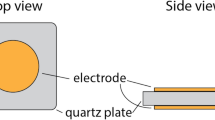Abstract
A non-invasive method based on electrical impedance tomography (EIT) is presented for the continuous assessment of human bladder urinary volume. An EIT system developed for bladder urinary volume imaging is first introduced. To validate the system and to examine the feasibility of estimating bladder fullness with EIT, an ex vivo experiment with four porcine bladders and an observational study of bladder urine filling in six healthy volunteers was conducted. Four porcine bladders were filled with saline solution with various concentrations and separately placed in a cylindrical tank. Each bladder was filled from 0 to 600 ml in increments of 100 ml. EIT measurements were performed and the maximum diameters of the bladders were recorded. For the observational study, bladder filling from empty to the status of strong micturition desire was monitored by EIT. The average conductivity index (ACI) was derived from the EIT images to quantify the bladder filling. For comparison, a four-electrode method, which is described in previous studies, was also applied. The results show a high positive linear correlation between the ACI and the bladder urinary volume in all subjects (correlation coefficient R = 0.98 ± 0.01, p < 0.001), with the performance of the four-electrode method being much poorer (correlation coefficient R = −0.27 ± 0.82, p < 0.001). This study demonstrates that EIT has the ability to distinguish bladder urinary volumes and thus has potential as a practical and effective technique for assessing bladder urinary volume.








Similar content being viewed by others
References
Birder, L. A., & de Groat, W. C. (2007). Mechanisms of disease: involvement of the urothelium in bladder dysfunction. Nature clinical practice Urology, 4, 46–54.
Warren, J. W. (1997). Catheter-associated urinary tract infections. Infectious Disease Clinics of North America, 11, 609–622.
Wyndaele, J. J. (2002). Complications of intermittent catheterization: Their prevention and treatment. Spinal Cord, 40, 536–541.
Holmes, J. H. (1967). Ultrasonic studies of the bladder. Journal of Urology, 97, 654–663.
Hwang, J. Y., Byun, S. S., Oh, S. J., & Kim, H. C. (2004). Novel algorithm for improving accuracy of ultrasound measurement of residual urine volume according to bladder shape. Urology, 64, 887–891.
Toozs, H. P., Khullar, V., & Cardozo, L. (2001). Three-dimensional ultrasound: a novel technique for investigating the urethral sphincter in the third trimester of pregnancy. Ultrasound in Obstetrics and Gynecology, 17, 421–424.
Anton, H. A., Chambers, K., Clifton, J., & Tasaka, J. (1998). Clinical utility of a portable ultrasound device in intermittent catheterization. Archives of Physical Medicine and Rehabilitation, 79, 172–175.
Ridder, D. D., Poppel, H. V., Baert, L., & Binard, J. (1997). From time dependent intermittent selfcatheterisation to volume dependent selfcatheterisation in multiple sclerosis using the PCI 5000 Bladdermanager. Spinal Cord, 35, 613–616.
Kristiansen, M. N., Djurhuus, J. C., & Nygaard, H. (2004). Design and evaluation of an ultrasound-based bladder volume monitor. Medical and Biological Engineering and Computing, 42, 762–769.
Pretlow, R. A. (1999). Treatment of nocturnal enuresis with an ultrasound bladder volume controlled alarm device. The Journal of Urology, 162, 1224–1228.
Koldewijn, E. L., Kerrebroeck, P. E. V., Schaafsma, E., Wijkstra, H., Debruyne, F. M., & Brindley, G. S. (1994). Bladder pressure sensors in an animal model. The Journal of Urology, 151, 1379–1384.
Takayama, K., Takei, M., Soejima, T., & Kumazawa, J. (1987). Continuous monitoring of bladder pressure in dogs in a completely physiological state. British Journal of Urology, 60, 428–432.
Talibi, M. A., Drolet, R., Kunov, H., & Robson, C. J. (1970). A model for studying the electrical stimulation of the urinary bladder of dogs. British Journal of Urology, 42, 56–65.
Waltz, F. M., Timm, G. W., & Bradley, W. E. (1971). Bladder volume sensing by resistance measurement. IEEE Transactions on BioMedical Engineering, 18, 42–46.
Denniston, J. C., & Baker, L. E. (1975). Measurement of urinary bladder emptying using electrical impedance. Medical and Biological Engineering and Computing, 13, 305–306.
Kim, C. T., Linsenmeyer, T. A., Kim, H., & Yoon, H. (1998). Bladder volume measurement with electrical impedance analysis in spinal cord-injured patients. American Journal of Physical Medicine and Rehabilitation, 77, 498–502.
Liao, W. C., & Jaw, F. S. (2011). Noninvasive electrical impedance analysis to measure human urinary bladder volume. Journal of Obstetrics and Gynaecology Research, 37, 1071–1075.
Shida, K., & Yagami, S. (2006). A non-invasive urination-desire sensing system based on four-electrodes impedance measurement method. Proceedings of the IEEE Annual Conference Industrial Electronics, 1, 2975–2978.
Cheney, M., Isaacson, D., & Newell, J. C. (1999). Electrical impedance tomography. SIAM Review, 41, 85–101.
Bayford, R., & Tizzard, A. (2012). Bioimpedance imaging: An overview of potential clinical applications. Analyst, 137, 4635–4643.
Leonhardt, S., Cordes, A., Plewa, H., Pikkemaat, R., Soljanik, I., Moehring, K., et al. (2011). Electric impedance tomography for monitoring volume and size of the urinary bladder. Biomedizinische Technik, 56, 301–307.
Schlebusch, T., Nienke, S., Santos, S. A., & Leonhardt, S. (2013). Bladder volume estimation from electrical impedance tomography. Proceedings of the IEEE Annual International Conference Medicine and Biology Society, 1, 6441–6444.
He, W., Ran, P., Xu, Z., Li, B., & Li, S. (2012). A 3D visualization method for bladder filling examination based on EIT. Computational and Mathematical Methods in Medicine, 2012, 1–9.
Schmidt, M. W. (2005). IEC 60601-1, 2005: A revolutionary standard, Part 1. Medical Device and Diagnostic Industry, 27, 50–56.
Adler, A., & Guardo, R. (1996). Electrical impedance tomography: Regularized imaging and contrast detection. IEEE Transactions on Medical Imaging, 15, 170–179.
Adler, A., & Lionheart, W. R. B. (2006). Uses and abuses of EIDORS: An extensible software base for EIT. Physiological Measurement, 27, S25–S42.
Hahn, G., Beer, M., Frerichs, I., Dudykevych, T., Schröder, T., & Hellige, G. (2000). A simple method to check the dynamic performance of electrical impedance tomography systems. Physiological Measurement, 21, 53–60.
Li, R., Gao, J., Wang, H., & Jiang, Q. (2013). Design of a noninvasive bladder urinary volume monitoring system based on bio-impedance. Engineering, 5, 321–325.
Kushner, R. F. (1992). Bioelectrical impedance analysis: a review of principles and applications. Journal of the American College of Nutrition, 11, 199–209.
Schlebusch, T., Nienke, S., Leonhäuser, D., Grosse, J., & Leonhardt, S. (2013). Optimal electrode positions to determine bladder volume by bioimpedance spectroscopy. Lecture Notes on Impedance Spectroscopy, 4, 67–73.
Luepschen, H., Meier, T., Grossherr, M., Leibecke, T., Karsten, J., & Leonhardt, S. (2007). Protective ventilation using electrical impedance tomography. Physiological Measurement, 28, S247–S260.
Meier, T., Luepschen, H., Karsten, J., Leibecke, T., Grossherr, M., Gehring, H., & Leonhardt, S. (2008). Assessment of regional lung recruitment and derecruitment during a PEEP trial based on electrical impedance tomography. Intensive Care Medicine, 34, 543–550.
Zhao, Z., Steinmann, D., Zivkovic, D. M., Martin, J., Frerichs, I., Guttmann, J., & Moller, K. (2010). A lung area estimation method for analysis of ventilation inhomogeneity based on electrical impedance tomography. Journal of X-Ray Science Technology, 18, 171–182.
Acknowledgments
This work was financially supported by Guangdong Province’s Key Laboratory of Construction Project-Sensor Technology and Biomedical Instruments, China (2011A060901013) and the National Natural Science Foundation of China (51205423).
Author information
Authors and Affiliations
Corresponding author
Rights and permissions
About this article
Cite this article
Li, R., Gao, J., Li, Y. et al. Preliminary Study of Assessing Bladder Urinary Volume Using Electrical Impedance Tomography. J. Med. Biol. Eng. 36, 71–79 (2016). https://doi.org/10.1007/s40846-016-0108-1
Received:
Accepted:
Published:
Issue Date:
DOI: https://doi.org/10.1007/s40846-016-0108-1




